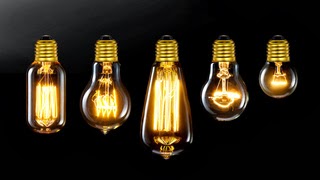The process works thanks to aluminum nitrate, one of several materials that naturally accumulates an electric charge in response to mechanical stress. That property is known as piezoelectricity. The idea of using low frequency vibrations to make electricity like this is not a new one, but this is a big step forward. In the past, scientists believed that the bigger the device, the more electricity could be harvested and could also only use one frequency, limiting the amount of electricity that could be produced significantly. The new approach can use a wide range of frequencies and works in tiny devices, like wireless sensors.
But let's not get ahead of ourselves. It's not like we're going to start lighting our homes with ambient sounds. And despite what the scientists say, it's probably not a good idea to think of the low frequency vibrations approach as a way to get infinite electricity because, well, infinity is a long time. If the technology pans out, though, it could be huge in the fields of wireless and medical technology, though. After all, nobody wants batteries in their body. More here.


















